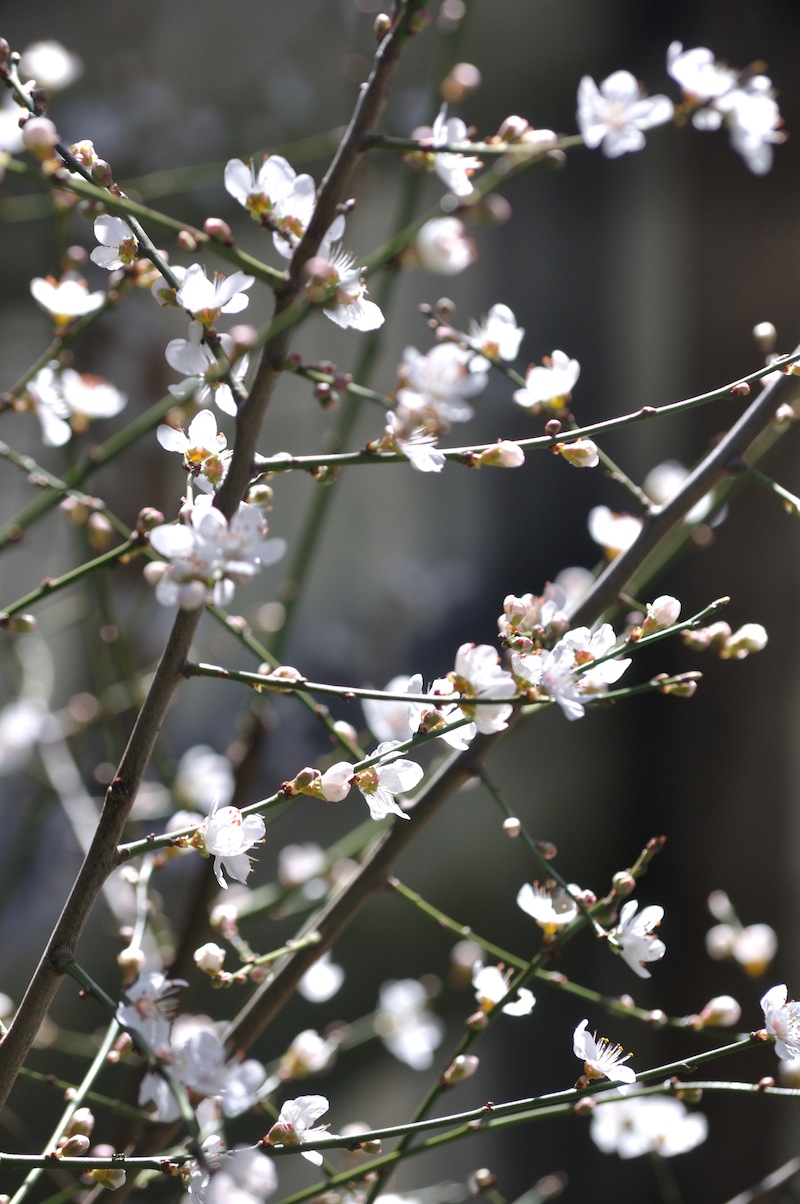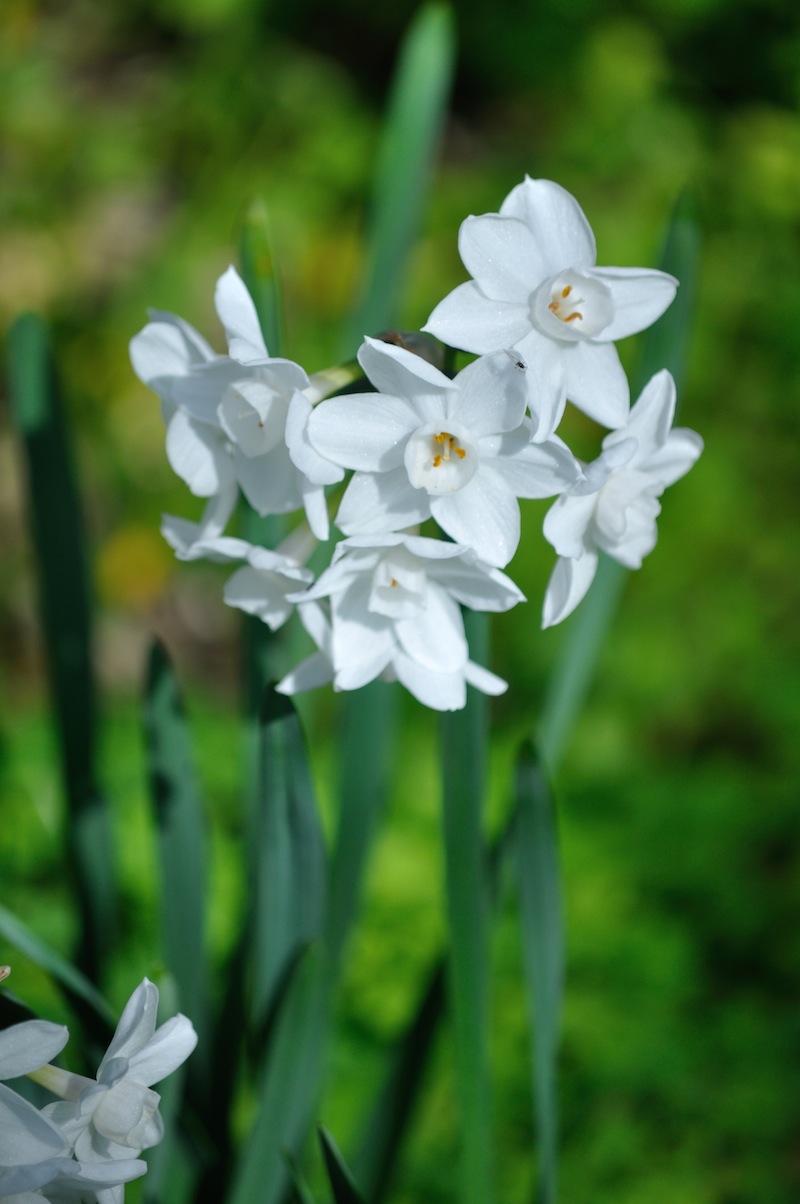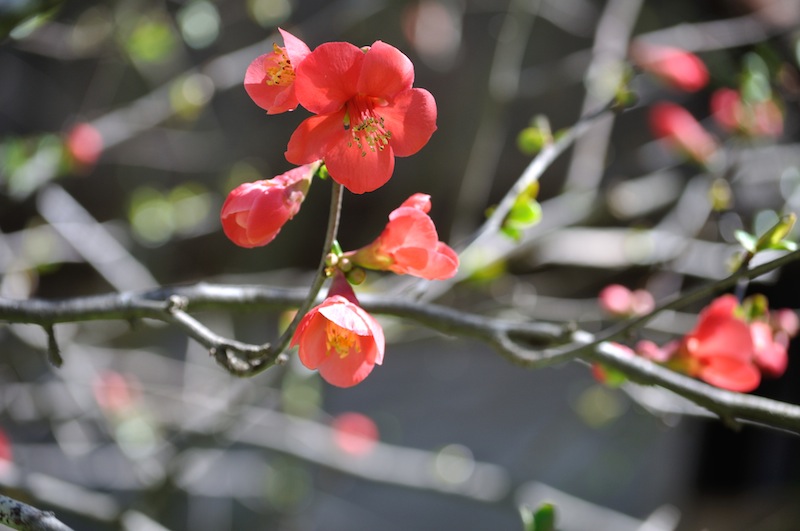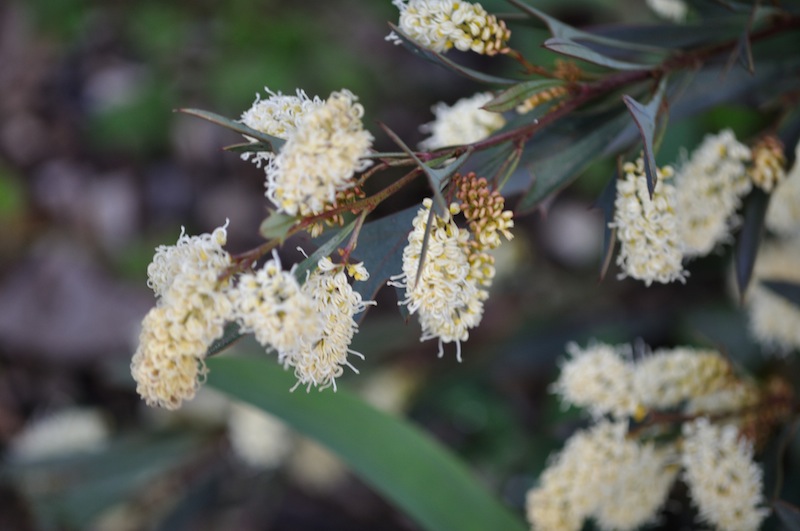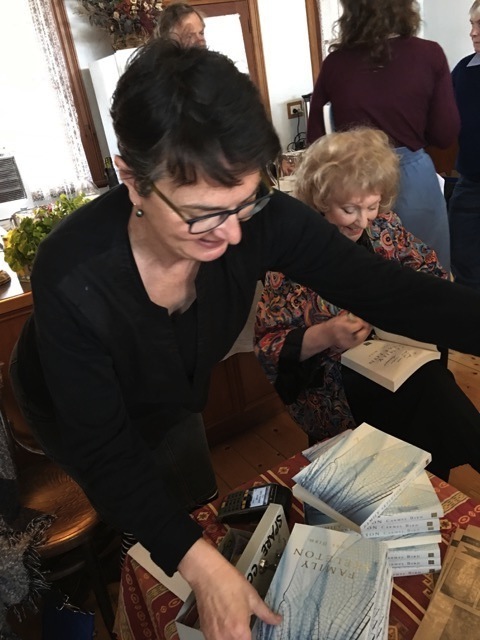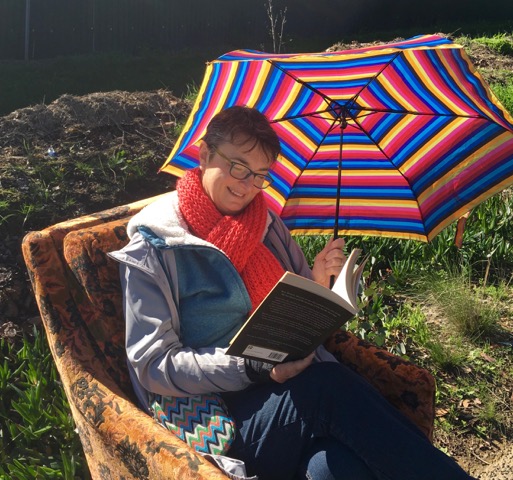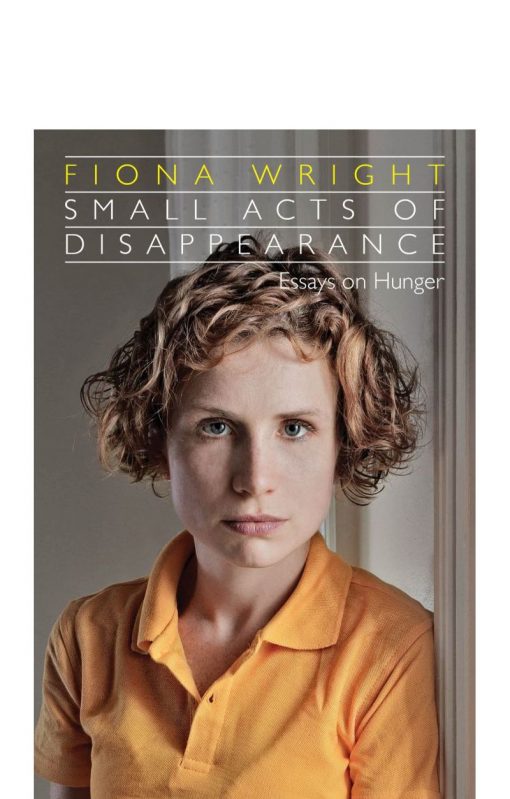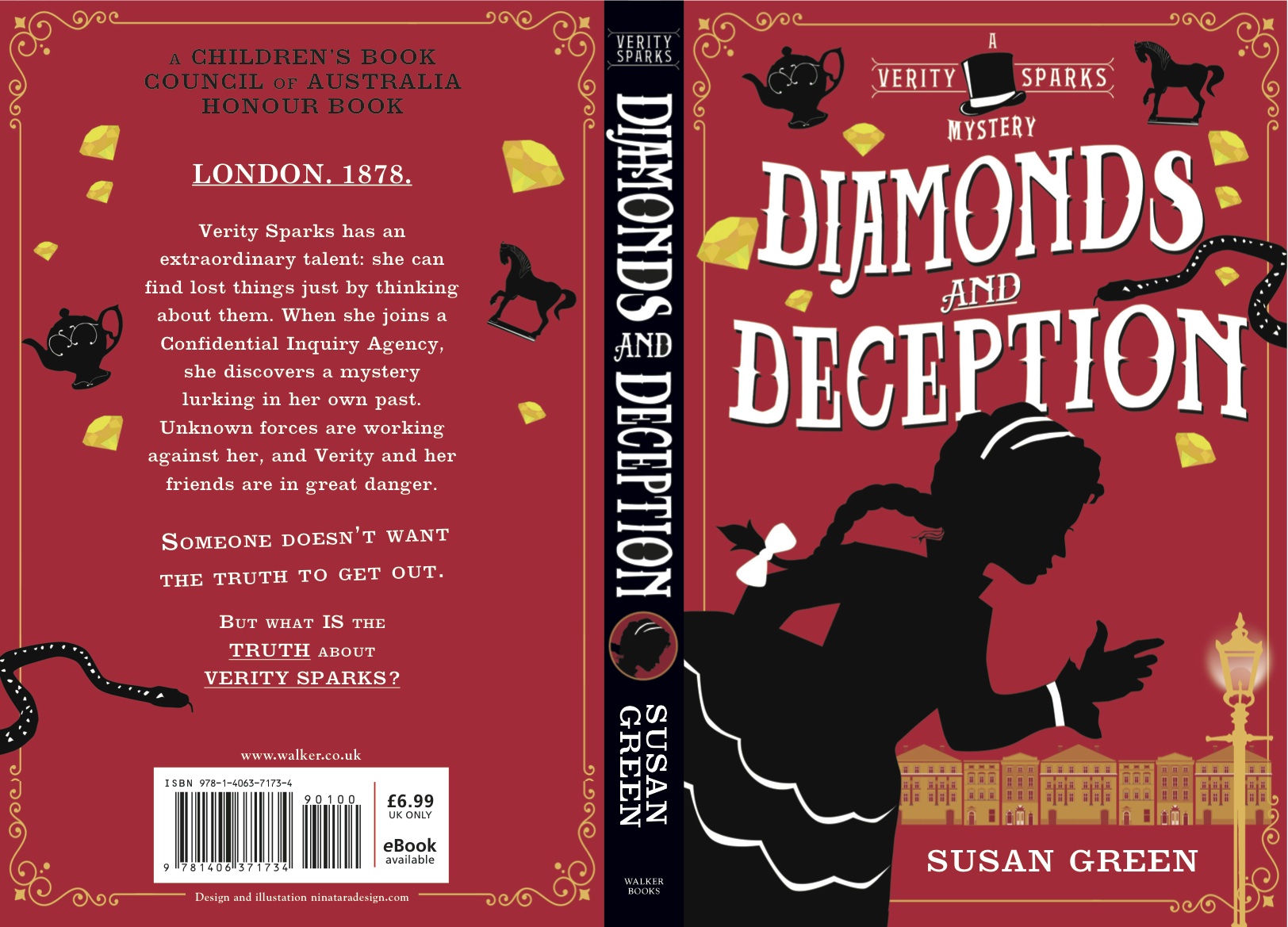-
Recent Posts
Recent Comments
- Kate C on SOMEBODY IS WALKING ON YOUR GRAVE
- Kate C on THE BOOK OF ALCHEMY
- Kate C on THE PLACE OF TIDES
- susan on THE BOOK OF ALCHEMY
- Kate C on THE BOOK OF ALCHEMY
Archives
- December 2025
- November 2025
- October 2025
- September 2025
- August 2025
- July 2025
- June 2025
- May 2025
- April 2025
- March 2025
- February 2025
- January 2025
- December 2024
- November 2024
- October 2024
- September 2024
- August 2024
- July 2024
- June 2024
- May 2024
- April 2024
- March 2024
- February 2024
- January 2024
- December 2023
- November 2023
- October 2023
- September 2023
- August 2023
- July 2023
- June 2023
- May 2023
- April 2023
- March 2023
- February 2023
- January 2023
- December 2022
- November 2022
- October 2022
- September 2022
- August 2022
- July 2022
- June 2022
- May 2022
- April 2022
- March 2022
- February 2022
- January 2022
- December 2021
- November 2021
- October 2021
- September 2021
- August 2021
- July 2021
- June 2021
- May 2021
- April 2021
- March 2021
- February 2021
- January 2021
- October 2020
- September 2020
- August 2020
- July 2020
- June 2020
- May 2020
- April 2020
- March 2020
- February 2020
- January 2020
- December 2019
- November 2019
- October 2019
- September 2019
- July 2019
- June 2019
- May 2019
- April 2019
- March 2019
- February 2019
- January 2019
- December 2018
- November 2018
- September 2018
- August 2018
- July 2018
- June 2018
- May 2018
- April 2018
- March 2018
- February 2018
- January 2018
- December 2017
- November 2017
- October 2017
- September 2017
- August 2017
- July 2017
- June 2017
- May 2017
- April 2017
- March 2017
- February 2017
- January 2017
- December 2016
- November 2016
- October 2016
- September 2016
- August 2016
- July 2016
- June 2016
- May 2016
- April 2016
- March 2016
- February 2016
- January 2016
- December 2015
- November 2015
- October 2015
- September 2015
- August 2015
- July 2015
- June 2015
- May 2015
- April 2015
- March 2015
- February 2015
- December 2014
- November 2014
- October 2014
- September 2014
- August 2014
- July 2014
- June 2014
- May 2014
- April 2014
- March 2014
- February 2014
- January 2014
- December 2013
- November 2013
- October 2013
- September 2013
- August 2013
- July 2013
- June 2013
- April 2013
- March 2013
- February 2013
- January 2013
- December 2012
- October 2012
- August 2012
- July 2012
- May 2012
- March 2012
- January 2012
- October 2011
- September 2011
- August 2011
- July 2011
- June 2011
- May 2011
- April 2011
- March 2011
- January 2011
- December 2010
Categories
Meta
SPRING
Posted in Uncategorized
Leave a comment
FAMILY SKELETON
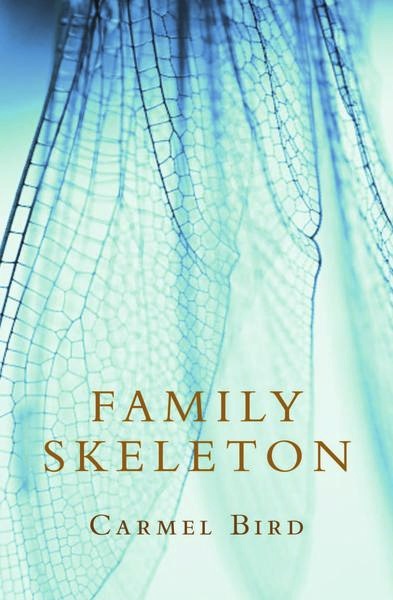 This exquisite cover adorns Carmel Bird’s latest novel. It’s a sly, witty and sinister tale of family stories and family secrets, past sins and modern manners. It’s partially narrated by the skeleton in the cupboard – it insists on telling us that it still has its own teeth – who lays bare the lives of the O’Day family and in particular that of the matriarch, Margaret. Margaret, a widow of unassailable virtue and good works, gets her turn, too, in her memoir ‘The Book of Revelation’.
This exquisite cover adorns Carmel Bird’s latest novel. It’s a sly, witty and sinister tale of family stories and family secrets, past sins and modern manners. It’s partially narrated by the skeleton in the cupboard – it insists on telling us that it still has its own teeth – who lays bare the lives of the O’Day family and in particular that of the matriarch, Margaret. Margaret, a widow of unassailable virtue and good works, gets her turn, too, in her memoir ‘The Book of Revelation’.
Things are going along in the usual way for the large, wealth O’Day clan, with births, deaths, marriages overseen by Margaret – until a distant cousin and keen genealogist Doria Fogelsang arrives from the US. Her investigations threaten to reveal a secret, hidden in plain sight, that will overturn Margaret’s whole life. What will Margaret do? The skeleton sees all…
This is Carmel Bird’s 30th published work. Round of applause! Though Carmel and I have become friends here in Castlemaine, I first encountered her through her ‘how-to’ classic Dear Writer, and later the marvellous novels Red Shoes and The White Garden. What caught me then – and now – is her distinctive narrative voice, which can be mordantly witty, even cynical – and ravishingly romantic all at the same time. She’s lost none of her edge. Family Skeleton contains her signature mix of beautiful, supple prose, shrewd observation and grim (Grimm?) exploration of death and life.
Here’s me selling books, and Carmel signing, at the recent launch at the funeral parlour’s refreshment rooms in Castlemaine.
Family Skeleton by Carmel Bird, UWA Press, $32.95
Posted in Uncategorized
Leave a comment
THRILL
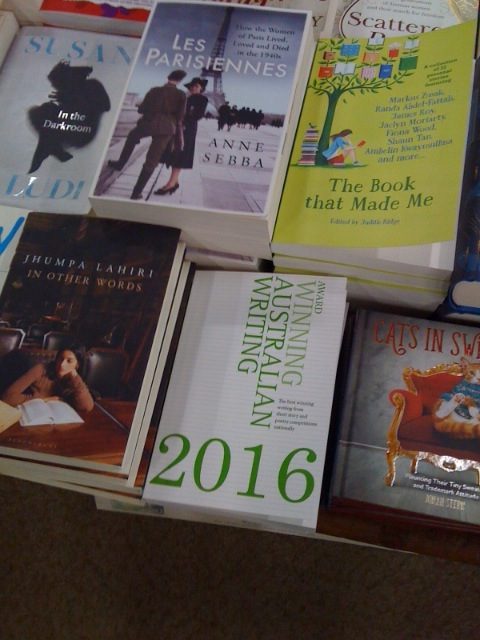 Two friends of mine, Anne Myers and Andrea Gillum – fantastic emerging writers I met at Varuna, the Writer’s House in Katoomba, NSW – have stories in the 2016 edition of Award Winning Australian Writing. All sorts of competitions are represented – poetry, life writing, short fiction, microfiction… It’s a surprise package of all-sorts, great to dip into and discover. From the Foreword by Sam Cooney:
Two friends of mine, Anne Myers and Andrea Gillum – fantastic emerging writers I met at Varuna, the Writer’s House in Katoomba, NSW – have stories in the 2016 edition of Award Winning Australian Writing. All sorts of competitions are represented – poetry, life writing, short fiction, microfiction… It’s a surprise package of all-sorts, great to dip into and discover. From the Foreword by Sam Cooney:
...being a writer is wholly about taking what’s in front of you, whether it’s IRL or in your mind, then adding flourishes and deleting some boring bits and twisting a bit here and turning a bit there, then doing whatiever if is you can do with that piece – submitting it, publishing it on your blog,etc – to obtain some of the glory you desire, and maybe a bit of bonus catharsis, too. What I mean is: being a writer is doing very silly things, taking unwise risks, in order to be party of something larger…
I can remember the thrill of seeing my first short story published in an anthology (it was the last, too, but that’s because I more or less stopped writing short fiction). On Wednesday I needed a very light and slim book for a train journey and I chose a book of short stories by Anglo-Irish writer Elizabeth Bowen. I don’t know if she’s much read today, though a couple of her novels – The Death of the Heart, In the Heat of the Day – are published in the Vintage Classics series.
In her preface to Encounters, written nearly 30 years after the collection was first published, she writes:
The importance to the writer of first writing must be out of all proportion to the objective value of what is written. It was perhaps more difficult then than now to disentangle what was there, on the page, from the creative excitement which had given it birth. There could be but one test of validity: publication. I know I shaped every line in the direction of the unknown arbiter: there was still the sensation of ‘showing up’ work. When I say that had I not written with the intention of being published I should not have written, I should add that I did not so much envisage glory as affirmation.
Not glory: affirmation.
Realistically, there isn’t much glory for most writers. Nor money.
But there is affirmation in being, at last, out there. On a page (of any kind) and – in ways you may not be able to plan or predict or foretell – in your reader’s life.
Award Winning Australian Writing 2016 edited by Chloe Brien, Melbourne Books $29.95
Posted in Uncategorized
Leave a comment
IT’S ALL ABOUT YOUR WRITING
I’m going up to the junior campus of our local secondary college tomorrow to give a little talk about submitting work for competitions and for publication. I thought it might be useful on the blog, too – so here it is!
It’s all about your writing. You want the reader to be able to love your piece – without having to work to hard to read it. So, your piece of writing should be double spaced, printed on one side only of the page, with wide margins.
Don’t use a fancy font. Please. Especially not one of the handwriting ones. Why? Because they can be hard to read. They can distract the reader from your work. And those two things can make a reader grumpy, which is not what you want. Use a font with a serif – like this one, Times New Roman – because it’s clear and easy to read. A sans (sans just means ‘without’) serif font – like Calibri – can look great, and you may want to use one for headings or part of a piece when it’s published, but not for submissions.
Don’t mix fonts in the same piece. Don’t use underline, bold or changes of size. This isn’t about squashing your creativity, it’s about giving your piece the best chance to be read and enjoyed. You might want to play around with type and font and layout when it’s published, but as a submission, it needs to be naked so that all the reader is aware of is the writing.
Punctuation isn’t about arbitrary rules either. It’s about making it easy to be understood. Paragraph your work. This means a new line for a new idea, theme, event, train of thought. Look at a few novels and you will get the idea. When you start a new paragraph, indent.
“If there’s a conversation, you need to make sure it’s clear you know who’s talking,” said Susan. “Have a look at what I’ve done here.”
“Yes, you’ve used quotes and a new line for each different speaker,” said Jane Austen.
“What a good idea,” said John Green. “And if you’ve finished a scene, you can put in a line break, and then go on to the next scene.”
A few further pointers. Go easy on the exclamation marks!!!!! Make sure you’ve spell-checked. See if you’ve unintentionally over-used words or phrases or ideas. In one of my books, I had everyone constantly glancing or glaring or looking or staring… My editor told me it was all too much eyeball action.
Put page numbers at the top or bottom of your work, along with the title. Sometimes you can put your name there, too – but often organisers of competitions want the work judged ‘blind’, so check first.
And finally, don’t get discouraged if you don’t get anywhere in a competition. Individual judges have their likes and dislikes, so partly it’s the luck of the draw. Sometimes a judge might argue passionately for an unusual or confronting work he or she loves. But in the end, judges have to decide on a winner, so to reach a compromise they may choose something less edgy.
It takes courage to submit something for a competition or for publication so be proud of yourself. Good luck!
Posted in Uncategorized
Leave a comment
VERITY GOES TO THE DAVITT AWARDS
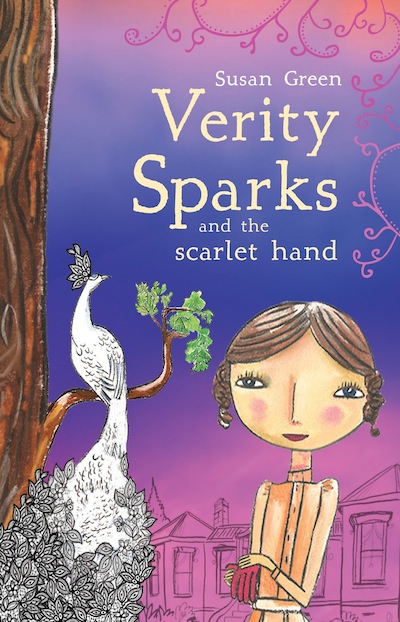 An exciting time on Saturday night – Verity Sparks and the Scarlet Hand was awarded Highly Commended in the Best Children’s Novel section of the Davitt Awards.
An exciting time on Saturday night – Verity Sparks and the Scarlet Hand was awarded Highly Commended in the Best Children’s Novel section of the Davitt Awards.
Sisters in Crime established the Davitts on its 10th anniversary, and named the award after Australia’s first crime writer, Ellen Davitt. Her full-length mystery novel Force and Fraud was published in 1865, pre-dating Fergus Hume’s more famous The Mystery of a Hansom Cab (1886).
Sisters in Crime put on a truly gala occasion at the Thornbury Theatre. It was packed with female crime writers and crime afficionados (afficionadas?) with a few brothers-in-law there as well. Both Verities have been on the long-list before, and I was thrilled this time to be shortlisted along with Catherine Jinks (Theophilus Grey and the Demon Thief) and RA Spratt for Friday Barnes:Under Suspricion.
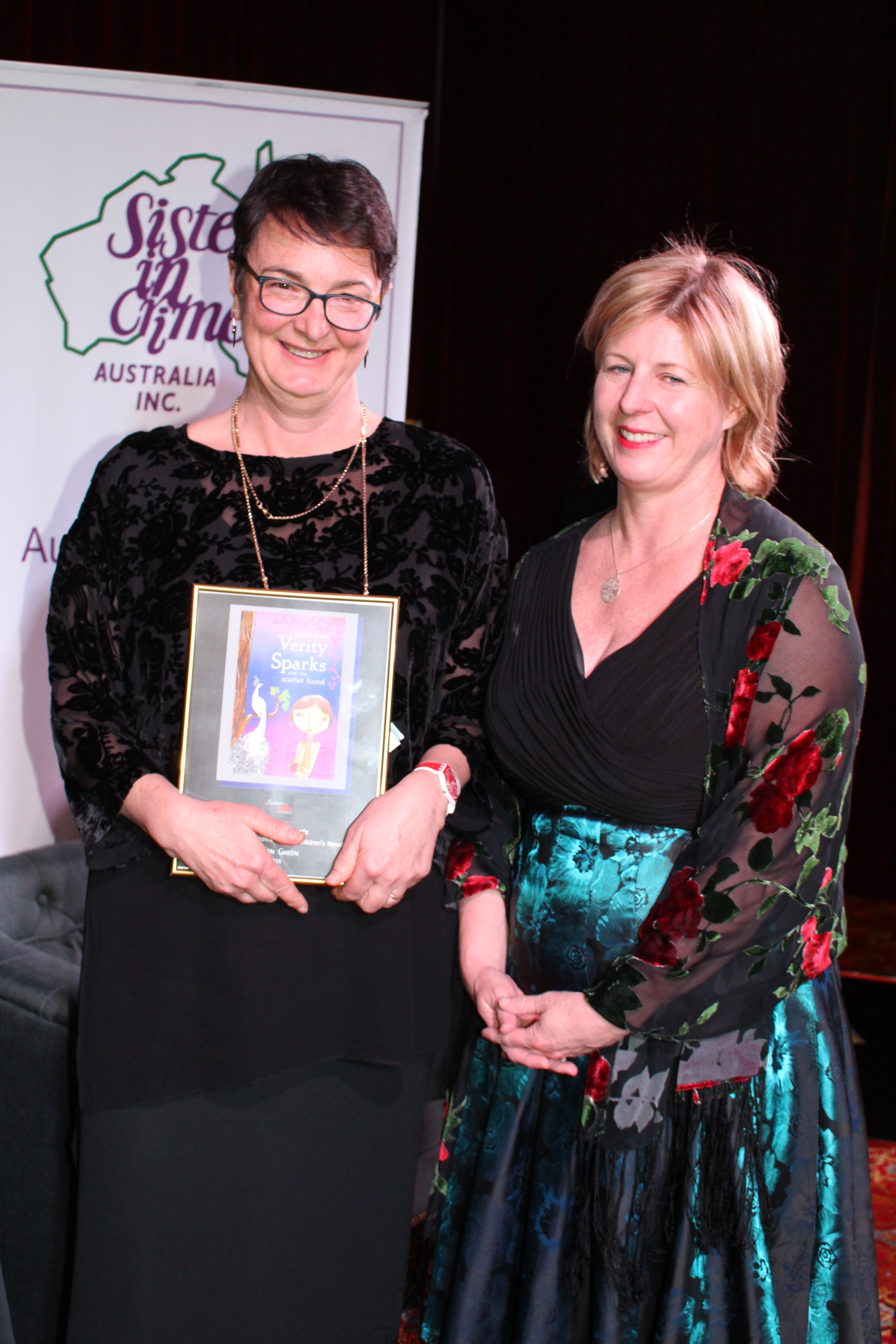 Best selling author Liane Moriarty (Big Little Lies, Truly Madly Guilty) was interviewed (or interrogated, according to the programme) and it was interesting to hear that though she’s been a multi-million bestseller in the US for a number of years, it’s taken the Australian reading public a while to catch on. She presented the awards with grace and charm and I confess to a bit of a fan-girl moment up there on stage with her.
Best selling author Liane Moriarty (Big Little Lies, Truly Madly Guilty) was interviewed (or interrogated, according to the programme) and it was interesting to hear that though she’s been a multi-million bestseller in the US for a number of years, it’s taken the Australian reading public a while to catch on. She presented the awards with grace and charm and I confess to a bit of a fan-girl moment up there on stage with her.
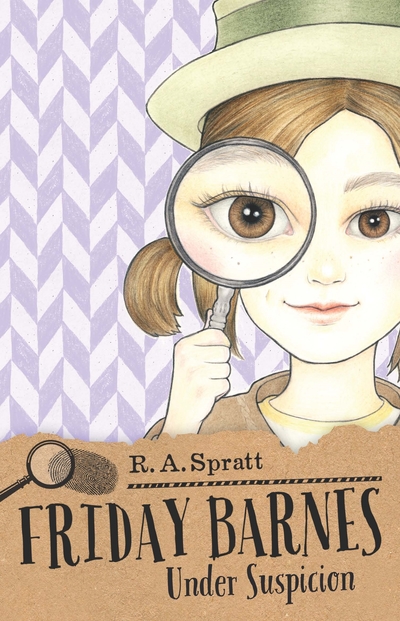 The winner of the Best Children’s Crime Novel was RA Spratt for the second in the Friday Barnes series, Friday Barnes: Under Suspicion.
The winner of the Best Children’s Crime Novel was RA Spratt for the second in the Friday Barnes series, Friday Barnes: Under Suspicion.
Congratulations RA!
Posted in Uncategorized
2 Comments
SMALL ACTS
I couldn’t see myself as one of those women – I thought that eating disorders only happen to women who are vain and selfish, shallow and somehow stupid: it took me years to realise that the very opposite is true, that these diseases affect people, men and women both, who think too much and feel too keenly, who give too much of themselves to other people. I knew I wasn’t vain, I wasn’t selfish; but I have always felt vaguely, indeterminately sad, too vulnerable to being hurt, too empathetic and too open, too demanding and determined in the standards that I set for myself and my life.
from Small Acts of Disappearance: Essays on Hunger by Fiona Wright; Giramondo, Sydney 2015.
I’m a bit squeamish about the memoir genre. Sometimes I feel a bit voyeuristic. Sometimes I wonder what the writer’s family or lovers or friends think about reading themselves on the page.
Sometimes, too, I wonder how people can bear for strangers to know so much about them. I wonder what this says about me.
It’s the exposure, I guess. Exposing the raw and ugly, the painful, the bodily and sexual and intimate. I don’t think it’s just inhibition (thought that’s possibly part of it). I genuinely feel queasy about readers – strangers – knowing very much about me, to the extent I’m even torn about the adult novel that’s currently in the works. In some ways I don’t actually want anyone to know the kinds of things I think about. But I want to write, I want to be published, and I want to be read – so that’s pretty silly, eh? I’ll get over it. And I know that one can understand writing about the deeply personal as a ‘taking back’ of power. You’re saying no to shame, to hiding and concealing, to feeling bad about who you are. Therapy, in a particularly public form? Maybe, but a young woman in my town has just published a zine about her recovery from chronic fatigue and depression; not only was I was moved by her courage in revealing her struggle, but by her hope that her story will help others in a similar situation.
Fiona Wright is a poet and critic. Her book of essays offers (as the back-cover blurb says) a number of different perspectives on her disease as well as the more straight-forward memoir sections. I enjoyed the literary, philosophical and historical diversions. But it was the personal that got to me. And because Wright is a poet, she can describe her illness in beautiful precise language, intense with detail, description, metaphor.
It’s background noise. A CD jammed on a track. A frog in a pot. A cork in a bottle. A secret world. A safety net. A parasite, a function, a friend.
But I confess that I too was guilty of thinking that an anorexic was one of those women, and after reading her book I feel sad, somewhat guilty, and full of fellow feeling. So many people (me included) have suffered, or are made to suffer – like Wright – for their vulnerability. So many people feel that it’s their own fault. They blame themselves, perhaps – thinking I’m too thin skinned, or not robust enough, or too sensitive, or weak, cowardly and pathetic. And it shows up in some way. Not necessarily as anorexia – me, I like food much too much not to eat – but in some form of self-hatred or self-punishment or self-control. Depression or anxiety or just a low-level scourging of self for failure of some kind.
Is there a happy ending? Not so much. Recovery is a work in progress. The last words of the last essay are about walking through the grounds of her old university. the carillon bells are playing, and when she stops to listen, she’s overcome by a deep sadness for her past self, alone, lost and confused. Sadness for ‘the girl who had this hunger already within her, and for the woman who I’ve been, who I’ve become.’
Posted in Uncategorized
Leave a comment
VERITY GOES TO THE UK
The Truth About Verity Sparks is being released in the UK any day now. Here’s a scan of the cover. You’ll notice (how could you not?) that both the cover and the title have been changed. Walker UK tell me that it’s a different market there. Alliteration is ‘in’; so are crisp silhouettes in cover design and (luckily) plucky girl detectives in bustles. I wasn’t too sure at first, but now I really like them both. What do you think?
Posted in Verity Sparks
2 Comments
WRITERS IN BENDIGO
I spent most of yesterday at the Bendigo Writer’s Festival.
Out of a possible seven sessions, I attended four, and that was plenty. I think if I’d gone to all seven, my head would have exploded. And I would have been very cranky from hunger, as well.
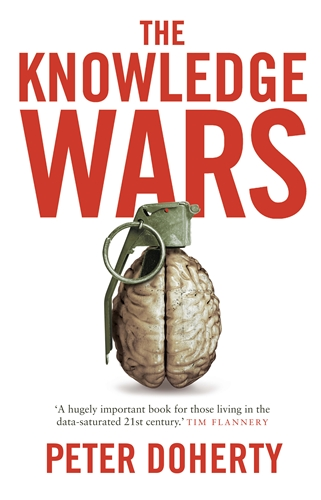 ‘Knowledge is Power’ was with Peter Doherty, a Nobel Laureate and scientist who talked about his book, The Knowledge Wars. He had a dry gravelly voice, a dry sense of humour, spoke excellent, good-natured good sense and was far removed from the boffin, egg-head, somewhere-on-the-spectrum science nerd of myth and stereotyple. For such a serious topic – the discussion was mainly around climate change – there was much laughter. He was in conversation with education researcher Bronwyn Hinz. She was young, vivacious and bubbly (in a good way), and they made a good pair. She added much to the event.
‘Knowledge is Power’ was with Peter Doherty, a Nobel Laureate and scientist who talked about his book, The Knowledge Wars. He had a dry gravelly voice, a dry sense of humour, spoke excellent, good-natured good sense and was far removed from the boffin, egg-head, somewhere-on-the-spectrum science nerd of myth and stereotyple. For such a serious topic – the discussion was mainly around climate change – there was much laughter. He was in conversation with education researcher Bronwyn Hinz. She was young, vivacious and bubbly (in a good way), and they made a good pair. She added much to the event.
As did the obviously angry questioner at the end. Bristling with hostility, with a faux-humble preamble about an ordinary person like her questioning an eminent person like him, she bored in about what exact percentage of climate change is caused by human activities. Doherty’s answer was an example of how to do this stuff. When pressed, he gave her his own personal opinion – most! – but referred her, quietly and without fuss, to the science. Told her what to look at, and where to find it. Told her that it was the accepted science adopted internationally by goverments. Didn’t get cross. We all clapped.
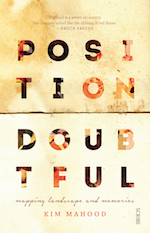 ‘An Affair of the Heart’, was with Kim Mahood, artist and writer, author of the award-winning Craft for a Dry Lake and now a new memoir, Position Doubtful. She grew up and has spent much time as an adult in remote areas of Western Australia.
‘An Affair of the Heart’, was with Kim Mahood, artist and writer, author of the award-winning Craft for a Dry Lake and now a new memoir, Position Doubtful. She grew up and has spent much time as an adult in remote areas of Western Australia.
What Mahood had to say about her art practice, her community projects involving maps, geography and Aboriginal understandings of place, her negotiations with people in the communities around their parts in her memoir was interesting and insightful but just missed giving me the sense of her passion for the place. Perhaps a stronger two-and-fro conversation would have opened my heart a bit more.
One session I queued up for – Stephanie Dowrick talking about her lifetime of spiritual inquiry – was full, and I missed out. Which turned out to be a good thing, for I was ready for a bit of fun. And leafing though her books on sale in the festival bookshop, I realised I’d forgotten my near-allergy to the genre of spiritual and self-help writing in which the author uses the word ‘we’ (as in, “How we feel about our own self…”) as if we’re cosily in this together. When the author is actually telling me her version of how it is for me.
Instead, I was delighted by ‘A Big Voice’. Which was Robyn Archer – the wonderful singer, performer, director of festivals, deputy chair of the Australia Council – who talked ten to the dozen in conversation with David Lloyd. It was like listening to a dinner party conversation with a witty, generous, kind and lively guest – don’t stop! I kept thinking. The audience joined in spontaneous applause when she suggested that every Ministry should have a desk for the arts. The Ministry of Defence, the Ministry of Foreign Affairs…
My last session had a Castlemaine connection as two of the authors live here. ‘Starting Over’ showcased three new-to-the-business authors talking to Scott Alterator about making a late start. Doug Falconer, who in a past life was drummer with Australian band Hunters and Collectors (and our neighbour), is in the throes of writing a novel. Sally Abbott, ex-journalist, now in public relations, who also lives in Castlemaine, won a prize for her unfinished manuscript Closing Down. She was given a contract by Hachette and is now in the process of editing. The other writer was Jerry Grayson, a much-decorated helicopter search-and-rescue pilot who’s published his first memoir Rescue Pilot:Cheating the Sea and is working on his second book about his experiences as a film pilot.
The two writers I’d wanted to see and hear – Helen Garner and Cheryl Strayed – had cancelled. I was disappointed. I’d just re-read Garner’s The Spare Room, as well as her new book, Everywhere I Look, was full of admiration for her sharp, clear vision and language; I wanted to hear her voice. And I’d been blown away by Wild. It was very bad luck for the two of them to cancel. (Confession: I wouldn’t have bought the pass if they hadn’t been on the bill.)
It was a long day of culture. I am all cultured out.
Posted in Uncategorized
Leave a comment
STATION ELEVEN
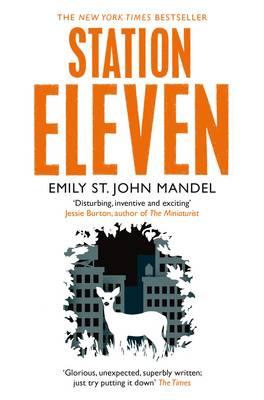 I had a rather intense day on Saturday. I had an acupuncture appointment in Melbourne, so I caught the train to Southern Cross station, and then a tram out to Preston. My mood might have been different if I’d been reading another book – but my novel for the day was Emily St John Mandel’s novel Station Eleven.
I had a rather intense day on Saturday. I had an acupuncture appointment in Melbourne, so I caught the train to Southern Cross station, and then a tram out to Preston. My mood might have been different if I’d been reading another book – but my novel for the day was Emily St John Mandel’s novel Station Eleven.
The action moves from the last days of civilization as we know it, to Year 20. That is, 20 years after the Georgia Flu has wiped out 99.9% of the planet’s population. I read the first few chapters, dreading what was to come. It’s going to end badly, I thought. I had in mind Cormac Mc Carthy’s The Road. I was thinking of terrible violence, crazed feral killers, babies roasted on spits, hunger and desperation and despair.
But – is this a spoiler? – Station Eleven was more hopeful and more enjoyable. For starters, it was only the people that died, not the animals, not the plants and trees and crops, and so by Year 20 there’s some sort of post-civilization civilization beginning to emerge. The book follows The Travelling Symphony, a band of actors and musicians, as they move through the country around the Great Lakes, putting on Shakespeare plays and giving concerts; it moves backward and forwards to the time just before the Flu; we meet characters then who survive into the now, and some who don’t, but whose lives carry forward into the future through art or memory or friendship.
Because the book put me in an odd frame of mind, my day travelling around Melbourne and the inner suburbs on public transport was quite (pun intended) trippy. I kept seeing and hearing more than usual. I asked myself, is the world is more vivid today? Or am I more receptive today? I had a few moments of odd wonder, where everything seemed beautiful – the wrappers and drink bottles and cans beside the train tracks; the weeds, unstoppable, sprouting through the gravel between the sleepers, the graffiti more like messages from some underworld or otherworld, than vandalism. Then what took me over was the usual appalled disbelief at the strange, mad, unhospitable world that we have made for ourselves to live in. In Station Eleven, the survivors look back to the technology of the day – the phones, the TVs, computers – as if these devices defined their lost world. I suppose they do. If you are younger than me – even in your 30s and 40s – it is all you have ever known. You haven’t known a world without mobiles, laptops, the Internet.
It seemed to me on Saturday in the city, that it’s quite a hostile world if you aren’t up to it, if you aren’t young and fit and resilient and well-off. I saw the homeless people in their sleeping bags and cardboard shelters, with their sad little signs; I saw a bearded, shoeless man at a tram stop, holding a half-empty 2-litre container of milk and a drunkenly raucous woman on the tram, talking and laughing without a break, while the other travellers tried to ignore her; a God-botherer with a microphone shouting angrily about sin in the Bourke Street Mall.
As I got off the tram and walked up to the clinic, I was thinking that this poor world is sinking under the weight of our sadness and stupidity. Thinking, as I often do, that we have made for ourselves a stupid world full of things we don’t need; we’re fuelled by compulsions that harm us, we believe any old bullshit that lures us in our greed and need and fear; we’re shitting in our own nest and before long, our lovely planet will become inhospitable not just to a sane or contented or happy human animal but to any human life, full stop.
And then I opened the gate, and the weeping cherry tree had blossoms on it, like pink stars, and I caught my breath as the two things smashed together – the hideous world and the beautiful world – as they do. As they always do.
Posted in Uncategorized
2 Comments

